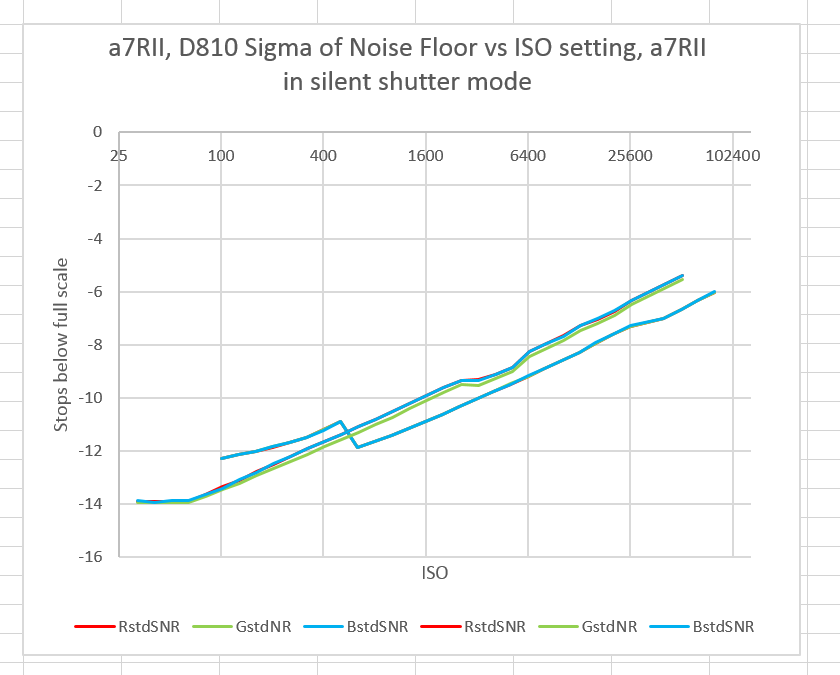From the mailbag:
My question is: the new Sony seems to be the ideal camera for my work as a movie unit stills photographer. It is silent and full frame which are two of my main concerns. However, I’m concerned about low light shooting. Will this camera give acceptable images for reproduction at high ISO? I generally use a Canon 1Dx rated at 5000iso and it is very good at this setting, particularly in tungsten light. Will the new Sony give comparable image quality at this ISO?
Thank you for your time, I look forward to hearing from you before I consider buying this camera.
I don’t have any experience with the Canon camera you mention, or many Canons, for that matter. However, I can show you read noise comparisons between the D810 and the a7RII operated in silent shutter mode.
The curve with the kink in it is the a7RII curve. You can see that, in spite of the penalty inflicted by silent shutter mode on the a7RII, it actually performs about half a stop better than the D810 at ISOs above 500.
These curves are not corrected for resolution differences, and thus show the a7RII at a 0.11 stop disadvantage.

When he talks about tungsten lighting, you have to figure out the standard deviation of the noise floor when including the camera matrix and the required white balance multipliers.
Different cameras have different filtration and so the relative gains between the channels will have to be different in different lighting conditions.